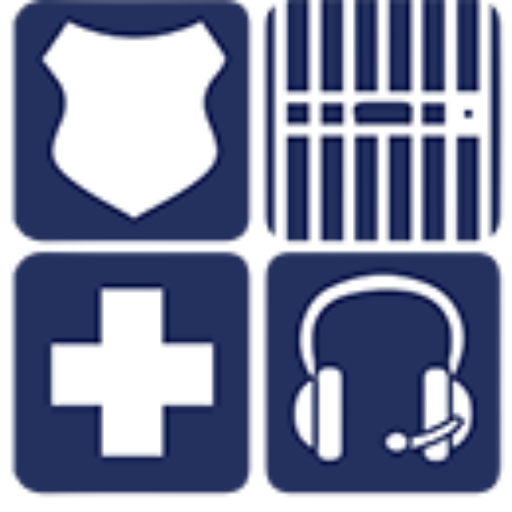Intelligence-Based Training has a place in training Student Officers. Do you use Intelligence-Based Training in your agency?
Field Training Officers are integral to the future and success of not only each individual student officer they mentor but to the overall success and legitimacy of the agency as a whole. We know the face of any agency is the patrol officer. How these patrol officers present that face to the public falls squarely on the shoulders of the Field Training Program collectively, and each FTO individually.
I have been a trainer with my agency since 2012. In that time I have come to rely on senses to gauge if the message has actually been received in the manner I intended. Does the student respond with statements such as; “I hear what you are saying.” or; “I see what you’re getting at.”
These statements may be a subconscious way of telling the trainer how the student learns. Indicators such as sight and sound may be actual information for you as a trainer to intelligently understand what type of learner you are dealing with. It’s akin to teaching defensive tactics by explaining that most of the U.S. population is right handed. It’s not something we absolutely hang our hats on, but it’s an indication and information we can use to intelligently incorporate into training and our interactions with student officers.
In Chapter 8 of Charles “Sid” Heals’ book; Sound Doctrine-A Tactical Primer, he explains the difference between actual “intelligence” and “information.” Both play into successful tactical operations yet are distinctly different. I believe we can carry this over into interactions with student officers in the field training program. Heal says; “The primary aim of intelligence is to support effective decision-making.”
Regarding information, Heal believes; “Information is defined as the knowledge or news of an event or situation gained through collection of facts or data. Therefore, information may be better understood as raw data, while intelligence is processed data.” (Chapter 8, Pg. #88) 
Good books are a tool FTO’s can use to gain many valuable insights into field operations and training concepts. I believe this specific book contains valuable wisdom for those of us who either supervise training or are assigned to training units, specifically field training officers.
How can we use these concepts and apply them to interactions with student officers? By Heals’ definition, reading the book would be gathering “information,” and applying the concepts contained in it would be “intelligence.” Here is how we can use this information to intelligently interact with our student officers.
The curriculum an FTO operates on is a pre-designed, pre-set package. IE. “It is what it is.” The FTO or PTO manual for your agency on this topic explains what specific task(s) the student officer must be able to perform before they can be signed off and given the blessing to go forth and commit law enforcement on their own. This is content. It is what Heal would describe as “information.” How we go about imparting and delivering that specific information in a manner that the student actually understand is another ballgame altogether. This is “intelligence.” Heal describes this process as “information fusion”, which completes the transition from information to actual intelligence, or “raw” to “processed.”
In his book, The Seven Habits of Highly Effective People, Dr. Stephen Covey lists Habit 2 of 7 as, “Beginning with the end in mind.” We can prepare and plan each set with a student officer with this in mind. Where do I want this student to be at the end of today is a good jump-off point for doing just that. By looking at the end first, I can now intelligently craft how I am going to guide the student officer to that end. This can be done from a micro view (per day) and expanded out to a macro view (per week). By envisioning the end goal, we have a clear view to formulate the beginning and the subsequent logical pathway to get there.
I happen to be a visual and kinesthetic learner. I need to see it or do it. I would advocate FTO’s chart it out, draw it out, and/or write it out. For your audio learners, I would do the above to cover all of your bases and then I would read it out loud to myself to hear how it sounds. Maybe even read it to another FTO whom happens to be an audio learner.
Subscribing to Heals’ book, we can also use information we have observed in prior student interactions to develop more efficient and effective learning in the future. An objective, retrospective view of the information gained from your prior interactions will lead you to intelligently prepare and plan your future interactions, such as lessons, task elements and more.
The development of more efficient and effective training is what I would define as actual intelligence-based training, that is training which evolves from raw information to actual intelligence. Here is an example;
At my agency we have been able to identify overall trends during in-service training. For example, scenario-based training provided clearly defined trends, which emerged during the training. We used this raw data, or information to develop future training, subsequently “intelligence.”
During the 2016 patrol year, an observation of transitions from less than lethal force options to lethal force option(s) under stress appeared to indicate slower than desired transition times, to include Taser over-reliance, and equipment familiarity issues. As a training cadre, we used this information to further develop and plan future (2017) training to address these issues specifically; “information fusion” to develop intelligence-based training.
If we document properly, take notes and meet with the entire FTO cadre regularly, we can follow this logic to our interactions with student officers in the Field Training Program. FTO Programs can use the information given to develop an actual intelligent, living, and evolving training plan for your student officers.
If we are engaged with our student officers, they will leak this information all over the place. When FTO’s are engaged with their student officers they will see this feedback. In other words, “Training Officers need to be able to put a bucket out to catch these leaks of feedback and then use it to their advantage.” Bottom-line is the student will tell you what they need, oftentimes unwittingly.
Understanding the difference between information and intelligence and the interplay between the two is key to the development of powerful, valuable, and relevant interactions with your student officers.
Good luck in your endeavors and training!
Deputy Scott Wells
Snohomish County Sheriff’s Office, WA
Full Time Trainer
Scott Wells is an 18 year veteran. Scott is currently a full time trainer with the Snohomish County Sheriff’s Office in Washington State. Scott is the Sheriff’s Office Head Defensive Tactics Instructor, Scenario Based Training Instructor, Use of Force Instructor and CIT Facilitator and Trainer, among other ancillary instructor duties. Scott regularly provides expert testimony for use of force issues for the county prosecutors office.
Reference
1. Heal, Charles “Sid.” Sound Doctrine-A Tactical Primer. New York: Lantern Books, 2000.
2. Covey, Stephen R. The 7 Habits of Highly Effective People: Restoring the Character Ethic. [Rev. ed.]. New York: Free Press, 2004.
Tags: FTO, fto training officers, FTO's, How to, Intelligence, Officer In Training, Program, PTO, SO, Student Officer, training, training officer Last modified: April 5, 2020






